RED PUTI (IQF) রানি পুঁটি মাছ
$ 10.99 Original price was: $ 10.99.$ 9.99Current price is: $ 9.99.
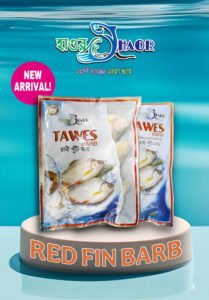
Origin & Habitat:
Rani Puti is a freshwater fish commonly found in rivers, ponds, canals, and wetlands of Bangladesh, India, and neighboring South Asian countries. It is a popular small fish in rural and urban diets.
Appearance:
-
Small-sized, slender body
-
Silvery-white color with a slight golden tint
-
Smooth skin with tiny scales
-
Pointed head and small fins
Weight:
-
Usually 20–100 grams
-
Very small compared to common freshwater fish
Taste:
-
Soft, tender, and mild-flavored flesh
-
Few tiny bones, easy to eat
-
Very popular for frying whole or cooking in light curries
Nutritional Value:
-
High in protein
-
Contains calcium, phosphorus, and essential vitamins
-
Low in fat, suitable for all ages
Uses:
-
Fried crispy (Rani Puti Fry)
-
Cooked in light curry (machher jhol)
-
Often included in mixed fish dishes in village-style meals

Origin & Habitat:
Rani Puti is a freshwater fish commonly found in rivers, ponds, canals, and wetlands of Bangladesh, India, and neighboring South Asian countries. It is a popular small fish in rural and urban diets.
Appearance:
-
Small-sized, slender body
-
Silvery-white color with a slight golden tint
-
Smooth skin with tiny scales
-
Pointed head and small fins
Weight:
-
Usually 20–100 grams
-
Very small compared to common freshwater fish
Taste:
-
Soft, tender, and mild-flavored flesh
-
Few tiny bones, easy to eat
-
Very popular for frying whole or cooking in light curries
Nutritional Value:
-
High in protein
-
Contains calcium, phosphorus, and essential vitamins
-
Low in fat, suitable for all ages
Uses:
-
Fried crispy (Rani Puti Fry)
-
Cooked in light curry (machher jhol)
-
Often included in mixed fish dishes in village-style meals
| Weight | N/A |
|---|---|
| Size | 2 LB PACK |
| 5 |
|
0 |
| 4 |
|
0 |
| 3 |
|
0 |
| 2 |
|
0 |
| 1 |
|
0 |
Related Products
HOT SALE 10% OFF
HOT SALE 10% OFF
HOT SALE 10% OFF
HOT SALE 10% OFF
HOT SALE 10% OFF
HOT SALE 10% OFF
HOT SALE 10% OFF
HOT SALE 10% OFF
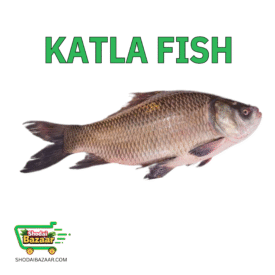
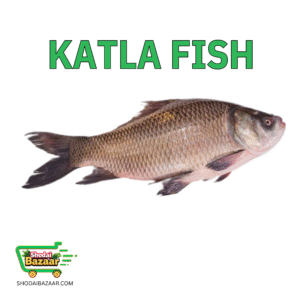 Katla Fish is a popular freshwater fish in South Asia (mainly Bangladesh, India, and Nepal). It belongs to the carp family, grows quite large in size (often several kilograms), and has a broad head with a deep body. Katla is well known for its soft, tasty flesh and is commonly prepared in curries, fried dishes, or traditional stews.
Katla Fish is a popular freshwater fish in South Asia (mainly Bangladesh, India, and Nepal). It belongs to the carp family, grows quite large in size (often several kilograms), and has a broad head with a deep body. Katla is well known for its soft, tasty flesh and is commonly prepared in curries, fried dishes, or traditional stews.
HOT SALE 10% OFF
HOT SALE 10% OFF
HOT SALE 10% OFF
HOT SALE 10% OFF
HOT SALE 10% OFF
HOT SALE 10% OFF
HOT SALE 10% OFF
HOT SALE 10% OFF
HOT SALE 10% OFF
HOT SALE 10% OFF
HOT SALE 10% OFF
HOT SALE 10% OFF
HOT SALE 10% OFF
HOT SALE 10% OFF
HOT SALE 10% OFF
HOT SALE 10% OFF
HOT SALE 10% OFF
HOT SALE 10% OFF
HOT SALE 10% OFF
HOT SALE 10% OFF
HOT SALE 10% OFF
HOT SALE 10% OFF
HOT SALE 10% OFF
HOT SALE 10% OFF
HOT SALE 10% OFF
HOT SALE 10% OFF
HOT SALE 10% OFF
HOT SALE 10% OFF
HOT SALE 10% OFF
HOT SALE 10% OFF
HOT SALE 10% OFF
HOT SALE 10% OFF
HOT SALE 10% OFF
HOT SALE 10% OFF
HOT SALE 10% OFF
HOT SALE 10% OFF
HOT SALE 10% OFF
HOT SALE 10% OFF
HOT SALE 10% OFF
HOT SALE 10% OFF
HOT SALE 10% OFF
HOT SALE 10% OFF
HOT SALE 10% OFF
HOT SALE 10% OFF
HOT SALE 10% OFF
HOT SALE 10% OFF
HOT SALE 10% OFF
HOT SALE 10% OFF
HOT SALE 10% OFF
HOT SALE 10% OFF
HOT SALE 10% OFF
HOT SALE 10% OFF
HOT SALE 10% OFF
HOT SALE 10% OFF
HOT SALE 10% OFF
HOT SALE 10% OFF
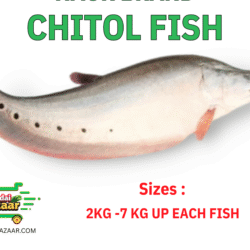
HOT SALE 10% OFF
HOT SALE 10% OFF
HOT SALE 10% OFF
HOT SALE 10% OFF
HOT SALE 10% OFF
HOT SALE 10% OFF
HOT SALE 10% OFF
HOT SALE 10% OFF
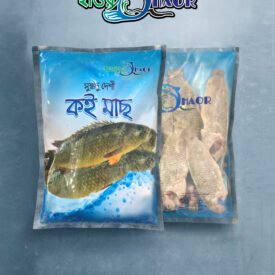
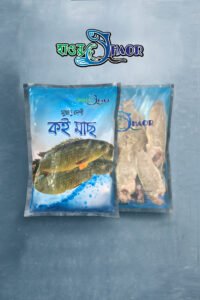
Origin & Habitat:
Koi fish is a freshwater fish widely found in rivers, ponds, and canals of Bangladesh, India, and Southeast Asia. It is often farmed in ponds for food purposes and sometimes for ornamental use.
Appearance:
-
Medium-sized, elongated body
-
Silver-gray, sometimes golden or yellowish in color
-
Smooth scales, slightly compressed body
-
Broad head with a pointed mouth
Weight:
-
Typically 200 grams – 1 kilogram
-
Can grow larger in ponds or rivers
Taste:
-
Soft, mild, and tasty flesh
-
Moderate bones, suitable for curries and frying
-
Popular in traditional Bengali dishes
Nutritional Value:
-
High in protein
-
Rich in calcium, phosphorus, and vitamins
-
Low in fat, suitable for all ages
Uses:
-
Cooked in curries (machher jhol)
-
Fried whole or cut into pieces
-
Sometimes steamed or roasted with spices
HOT SALE 10% OFF
HOT SALE 10% OFF
HOT SALE 10% OFF
HOT SALE 10% OFF
HOT SALE 10% OFF
HOT SALE 10% OFF
HOT SALE 10% OFF
HOT SALE 10% OFF
HOT SALE 10% OFF
HOT SALE 10% OFF
HOT SALE 10% OFF
HOT SALE 10% OFF
HOT SALE 10% OFF
HOT SALE 10% OFF
HOT SALE 10% OFF
HOT SALE 10% OFF
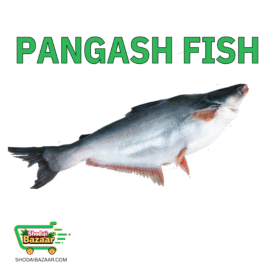
Origin: Native to South and Southeast Asia, especially Bangladesh, India, Vietnam, and Thailand.
Nature: A freshwater catfish species, commonly farmed because it grows fast and survives well in ponds and rivers.
Appearance:
-
Long body, smooth skin without scales
-
Color: grayish on top and silver-white on the belly
-
Has a broad head with whisker-like barbels (catfish feature)
Weight: Can range from 500 grams to several kilograms (some grow up to 10–15 kg).
Taste: Soft, tender flesh with very few bones; mild flavor, often compared to tilapia but slightly fattier.
Nutritional Value:
-
Rich in protein
-
Contains omega-3 fatty acids
-
Source of calcium, iron, vitamin A, and phosphorus
Uses:
-
Popular for curries, fish soups, and fried dishes
-
Also exported as fillets (often called pangasius in international markets)
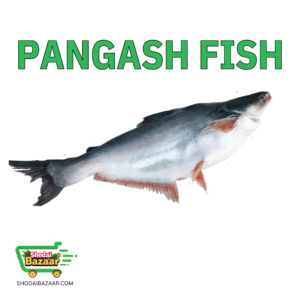
HOT SALE 10% OFF
HOT SALE 10% OFF
HOT SALE 10% OFF
HOT SALE 10% OFF
HOT SALE 10% OFF
HOT SALE 10% OFF
HOT SALE 10% OFF
HOT SALE 10% OFF

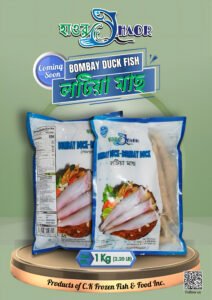
Origin & Habitat:
Lotia fish is a freshwater fish commonly found in rivers, canals, ponds, and wetlands of Bangladesh and India. It is a small fish that is very popular in local markets and village diets.
Appearance:
-
Small, slender body
-
Silvery-gray color with a shiny belly
-
Smooth skin with tiny scales
-
Narrow head with small fins
Weight:
-
Usually 20–150 grams
-
Small size makes it ideal for quick cooking
Taste:
-
Soft, tender, and mildly flavored flesh
-
Few fine bones, easy to eat
-
Very suitable for curries and frying
Nutritional Value:
-
High in protein
-
Contains calcium, phosphorus, and essential vitamins
-
Low in fat, healthy for all ages
Uses:
-
Fried whole (Lotia Fry)
-
Cooked in light curry (machher jhol)
-
Sometimes used in mixed small fish dishes in villages
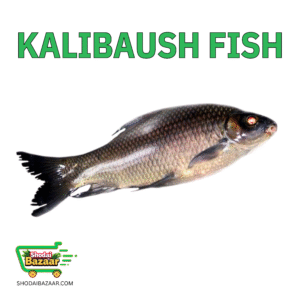
Origin & Habitat:
Kalibaush is a popular freshwater fish in South Asia. It is commonly found in rivers, haors, beels, and ponds of Bangladesh and India.
Appearance:
-
Elongated, slightly flattened body
-
Silvery with a golden tint
-
Darker back (dorsal side)
Weight: Typically ranges from 250 grams to 2 kilograms.
Taste:
-
Soft and flavorful flesh
-
Medium-sized bones, but easy to eat
-
Excellent for curries and stir-fried dishes
Nutritional Value:
-
Rich in protein
-
Contains Vitamin A, calcium, and phosphorus
-
Low in fat, making it healthy
Uses:
-
Popular in traditional village-style cooking
-
Cooked in curries with potatoes, eggplant, or lentils
-
Also suitable for frying and pan-roasting
HOT SALE 10% OFF
HOT SALE 10% OFF
HOT SALE 10% OFF
HOT SALE 10% OFF
HOT SALE 10% OFF
HOT SALE 10% OFF
HOT SALE 10% OFF
HOT SALE 10% OFF
HOT SALE 10% OFF
HOT SALE 10% OFF
HOT SALE 10% OFF
HOT SALE 10% OFF
HOT SALE 10% OFF
HOT SALE 10% OFF
HOT SALE 10% OFF
HOT SALE 10% OFF
HOT SALE 10% OFF
HOT SALE 10% OFF
HOT SALE 10% OFF
HOT SALE 10% OFF
HOT SALE 10% OFF
HOT SALE 10% OFF
HOT SALE 10% OFF
HOT SALE 10% OFF
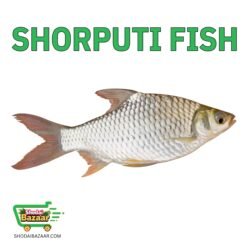
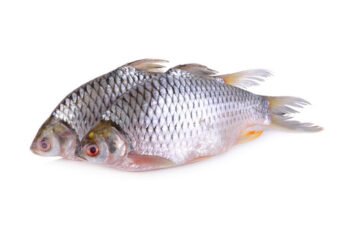
Origin & Habitat:
Puti is a very common freshwater fish found in rivers, ponds, canals, and wetlands of Bangladesh, India, and other South Asian countries. It’s small in size and very popular in rural and urban diets.
Appearance:
-
Small-sized fish, usually 20–100 grams
-
Shiny silvery body, sometimes with light golden shade
-
Slender body with small scales
Weight: Generally under 100 grams, but some varieties grow larger.
Taste:
-
Very tasty and flavorful
-
Soft flesh with tiny bones
-
Popular for village-style curries and fries
Nutritional Value:
-
Rich in protein
-
High in calcium and phosphorus (good for bones)
-
Contains vitamins and minerals essential for health
Uses:
-
Eaten fried (crispy puti fry)
-
Cooked in light curry (machher jhol) with vegetables
-
Often dried and stored in rural areas
HOT SALE 10% OFF
HOT SALE 10% OFF
HOT SALE 10% OFF
HOT SALE 10% OFF
HOT SALE 10% OFF
HOT SALE 10% OFF
HOT SALE 10% OFF
HOT SALE 10% OFF
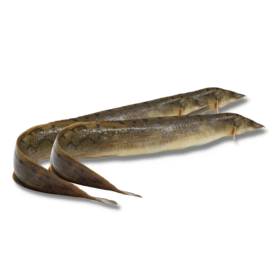
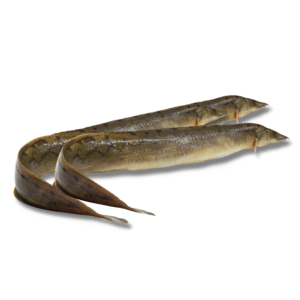
Origin & Habitat:
Long Baim (sometimes called Spiny Eel) is a freshwater fish found in rivers, ponds, canals, and wetlands of Bangladesh, India, and Southeast Asia. It prefers muddy bottoms and slow-moving waters.
Appearance:
-
Long, snake-like body (hence called Long Baim)
-
Brownish or grayish body with black spots or stripes
-
Has small spines and a pointed snout
-
Looks like a snake but is a true fish (eel family)
Weight & Size:
-
Usually 100 grams to 1 kg
-
Can grow up to 1–1.5 feet long
Taste:
-
Flesh is soft, tasty, and boneless-like texture
-
Considered a delicacy in many rural areas
-
Often enjoyed by older people for its smooth meat
Nutritional Value:
-
High in protein
-
Rich in iron and calcium
-
Traditionally believed to help in weakness and recovery after illness
Uses:
-
Popular in curry (baim machher jhol)
-
Cooked with mustard paste or vegetables
-
Sometimes fried whole
HOT SALE 10% OFF
HOT SALE 10% OFF
HOT SALE 10% OFF
HOT SALE 10% OFF
HOT SALE 10% OFF
HOT SALE 10% OFF
HOT SALE 10% OFF
HOT SALE 10% OFF
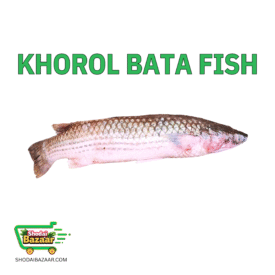
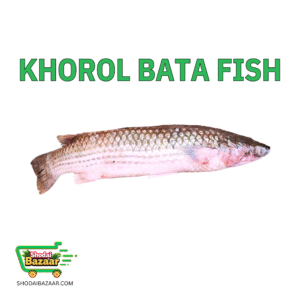
Origin & Habitat:
Khorol Bata is a small freshwater fish found in rivers, canals, beels, and ponds of Bangladesh and Eastern India. It belongs to the Bata fish family, which is quite common in rural markets.
Appearance:
-
Small to medium size, usually 50–200 grams
-
Slender body, silver in color with a shiny belly
-
Dorsal side (top) slightly darker
Weight: Typically under 200 grams, though bigger ones can be found.
Taste:
-
Very tasty, rich in flavor
-
Flesh is soft and fine
-
Small bones, but locals enjoy eating it whole (fried or curried)
Nutritional Value:
-
High in protein
-
Rich in calcium and phosphorus (good for bones)
-
Contains omega-3 fatty acids
Uses:
-
Often eaten fried (crispy style)
-
Cooked as a curry with potatoes or vegetables
-
Popular in village-style meals
HOT SALE 10% OFF
HOT SALE 10% OFF
HOT SALE 10% OFF
HOT SALE 10% OFF
HOT SALE 10% OFF
HOT SALE 10% OFF
HOT SALE 10% OFF
HOT SALE 10% OFF
HOT SALE 10% OFF
HOT SALE 10% OFF
HOT SALE 10% OFF
HOT SALE 10% OFF
HOT SALE 10% OFF
HOT SALE 10% OFF
HOT SALE 10% OFF
HOT SALE 10% OFF
HOT SALE 10% OFF
HOT SALE 10% OFF
HOT SALE 10% OFF
HOT SALE 10% OFF
HOT SALE 10% OFF
HOT SALE 10% OFF
HOT SALE 10% OFF
HOT SALE 10% OFF
HOT SALE 10% OFF
HOT SALE 10% OFF
HOT SALE 10% OFF
HOT SALE 10% OFF
HOT SALE 10% OFF
HOT SALE 10% OFF
HOT SALE 10% OFF
HOT SALE 10% OFF
HOT SALE 10% OFF
HOT SALE 10% OFF
HOT SALE 10% OFF
HOT SALE 10% OFF
HOT SALE 10% OFF
HOT SALE 10% OFF
HOT SALE 10% OFF
HOT SALE 10% OFF
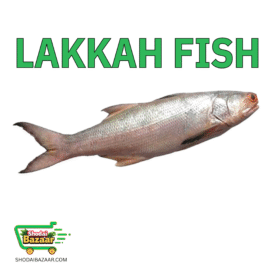
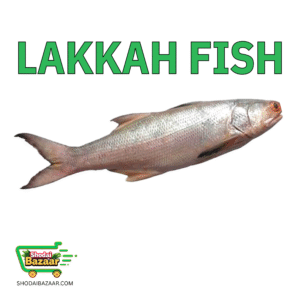
Origin & Availability:
Lakka fish is commonly found in rivers and coastal waters of Bangladesh, India, and other parts of South Asia. It’s a freshwater and sometimes brackish-water fish, available in local markets throughout the year.
Appearance:
-
Medium-sized fish, elongated body
-
Silver-gray in color with a slightly darker back
-
Smooth skin with small scales
Weight: Usually ranges between 200 grams to 1.5 kilograms.
Taste:
-
White, soft, and flaky flesh
-
Mild in flavor, easy to cook
-
Few fine bones, which makes it good for curries and fries
Nutritional Value:
-
High in protein
-
Low in fat
-
Contains calcium, phosphorus, and essential minerals
Uses:
-
Popular for traditional curries (machher jhol)
-
Fried or grilled
-
Sometimes dried and preserved in coastal areas
HOT SALE 10% OFF
HOT SALE 10% OFF
HOT SALE 10% OFF
HOT SALE 10% OFF
HOT SALE 10% OFF
HOT SALE 10% OFF
HOT SALE 10% OFF
HOT SALE 10% OFF

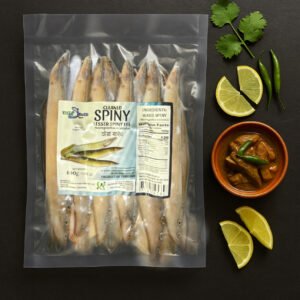
Origin & Habitat:
Star Baim is a freshwater spiny eel found in rivers, canals, ponds, and wetlands of Bangladesh, India, and Southeast Asia. It prefers muddy or sandy bottoms and comes out mostly at night to feed.
Appearance:
-
Long, slender, snake-like body
-
Brownish or grayish color with small dark spots or star-like patterns along the body
-
Narrow pointed head with small barbels
-
Looks like a small snake, but it is a true fish
Weight & Size:
-
Typically 100–500 grams
-
Can grow up to 1–1.5 feet long
Taste:
-
Soft, tender flesh
-
Less bony compared to other small fishes
-
Considered a delicacy in rural areas
Nutritional Value:
-
High in protein
-
Contains iron, calcium, and phosphorus
-
Traditionally believed to give strength and aid recovery
Uses:
-
Cooked in curries (baim machher jhol)
-
Fried or pan-roasted
-
Often prepared with mustard paste or mild spices
HOT SALE 10% OFF
HOT SALE 10% OFF
HOT SALE 10% OFF
HOT SALE 10% OFF
HOT SALE 10% OFF
HOT SALE 10% OFF
HOT SALE 10% OFF
HOT SALE 10% OFF



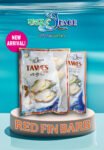
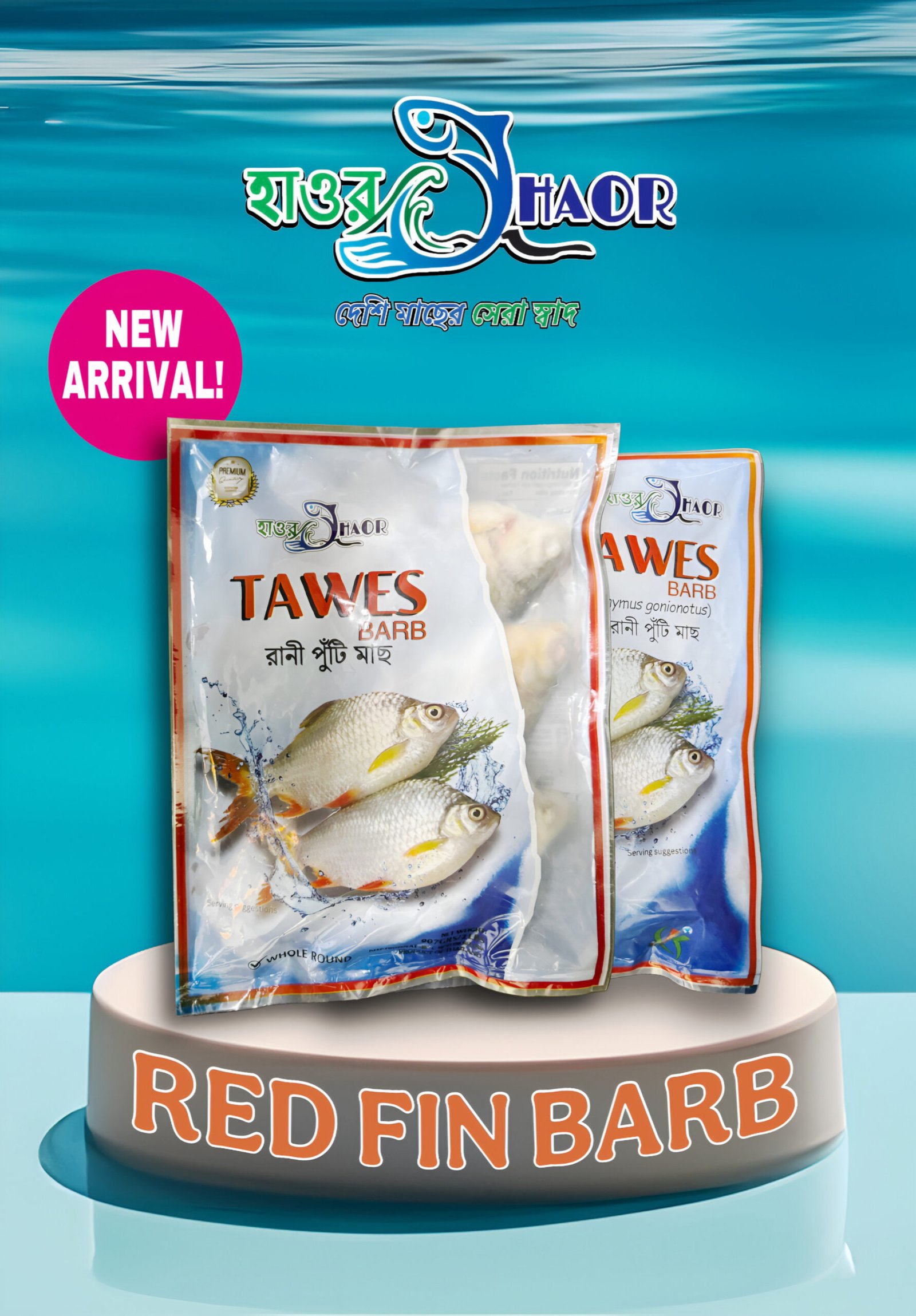

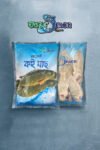
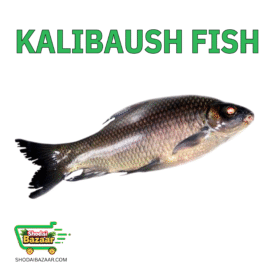
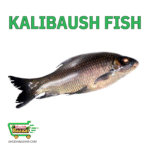
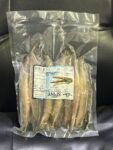
Reviews
There are no reviews yet.